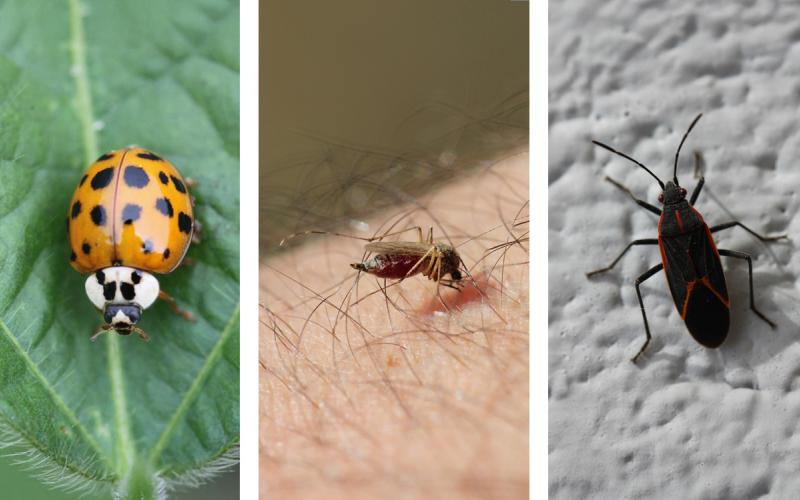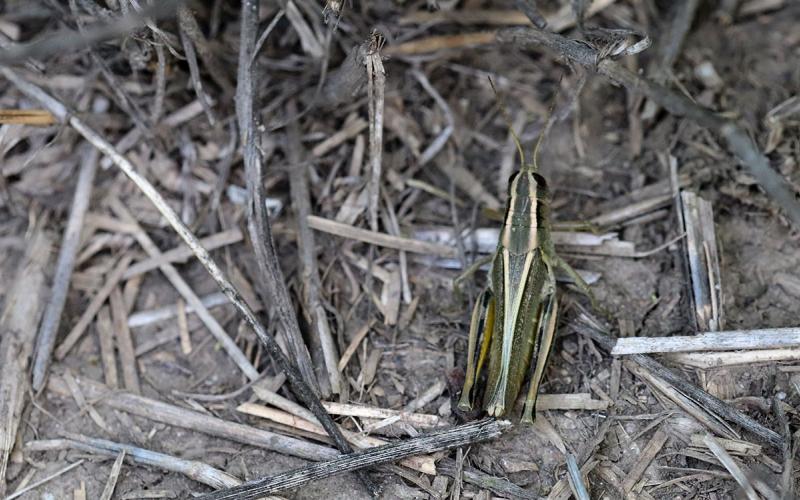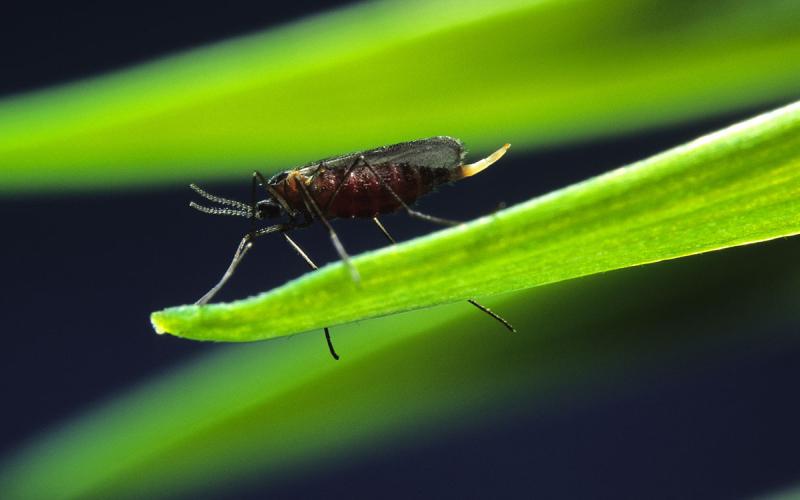Written collaboratively by Adam Varenhorst, Philip Rozeboom, Patrick Wagner, and Brad McManus.
Originally Submitted: May 8, 2023
Army cutworm caterpillars have been spotted in winter wheat in central South Dakota. Although they haven’t been extremely active in the last few weeks, their activity will increase as temperatures increase across the state. Army cutworms can rapidly reduce winter wheat stands if large populations are present. Their activity is often discovered by observing patches of winter wheat that start to look like they are thinning out.
Lifecycle and Identification
Army cutworm caterpillars overwinter in winter wheat and alfalfa fields. This allows them to emerge and be active earlier in the spring, and it is the reason that they are often the first insect pests observed in winter wheat fields. Young caterpillars are small and are generally a light green-brown color with relatively few markings. As the caterpillars mature, they develop a dull-gray or gray-brown body that may have mottling (spots or smears of varying colors, see Figure 1).
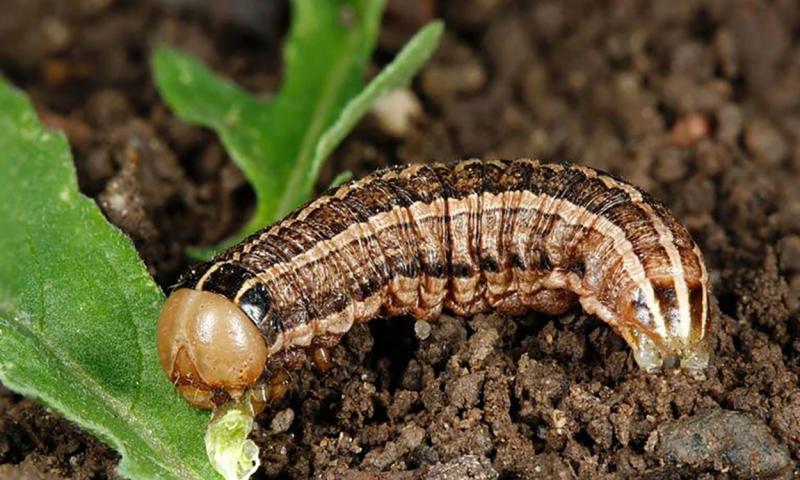
Older caterpillars will have several pale stripes that run the length of their bodies. Regardless of age, the caterpillars have brown heads.
Army cutworm caterpillars feed at night and hide just below the soil surface during the day. During overcast days, the caterpillars may remain active. Army cutworms can become active during relatively cool temperatures (around 40 degrees Fahrenheit). The temperature that they are active may be lower in fields with limited ground cover but higher for fields with more ground cover.
Scouting for the caterpillars can be time intensive due to sampling soil, thus management decisions based on detection and characteristic plant injury are recommended. The feeding is characterized as “clipping,” where the caterpillars feed on the plant near the soil surface. This type of feeding can result in ragged patches of plants that appear to be cut or clipped (see Figure 2).
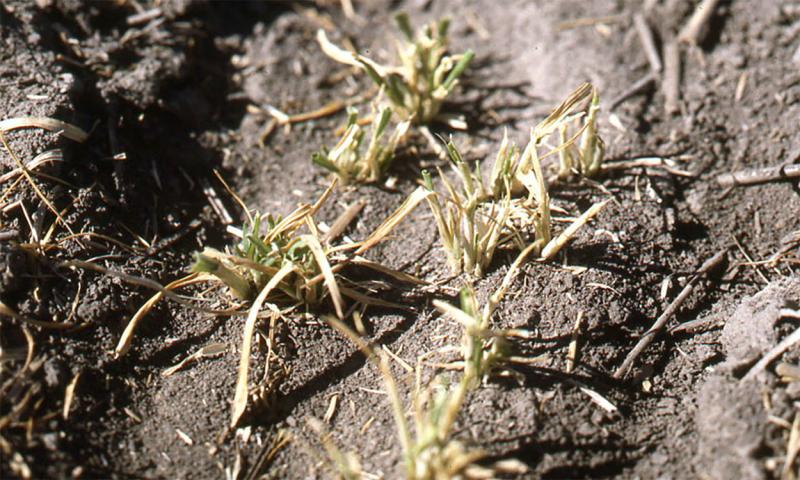
For winter wheat, the caterpillars tend to feed on the tender blades. Army cutworms generally do not feed on the stem, crown, or meristematic tissues, which allows plants to regrow.
In areas where caterpillars are abundant, they will move from food source to food source “army style.” Management is recommended if large patches of the field have been defoliated, or if 2 to 4 army cutworm caterpillars are observed per square foot.
Management
Injury to winter wheat from army cutworms will be worse for fields that are experiencing moisture stress. If management is necessary, an insecticide application is recommended. Please refer to the latest South Dakota Pest Management Guide: Wheat for a list of products labeled for cutworm management. When applying insecticides for army cutworms, make sure that the forecasted temperatures are at or above 50 degrees Fahrenheit for three to four days after application to ensure that the caterpillars will be exposed to the insecticides.
